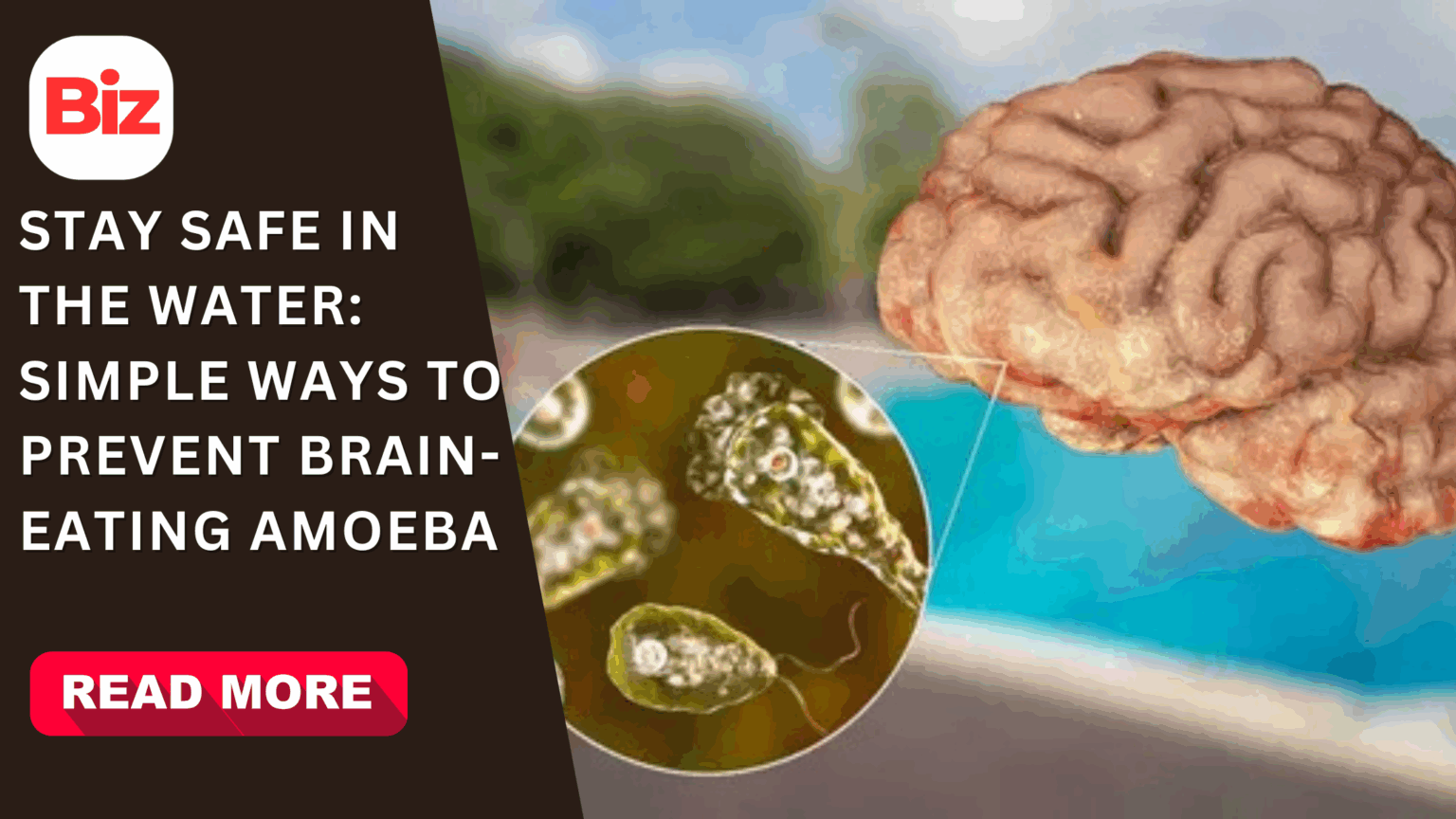Naegleria fowleri (also known as brain-eating amoeba) is a deadly organism that results in a brain infection, called Primary Amoebic Meningoencephalitis (PAM). The infection is most of the time fatal even though cases are extremely few and thus prevention takes a lot of importance. To stay informed and safe, in this article, we will discuss how to avoid the brain-eating amoeba infection, useful safety precautions, and the most commonly asked questions.
What is Brain-Eating Amoeba?
Naegleria fowleri is a microscopic amoeba that is usually present in warm freshwater conditions including:
- Lakes and rivers
- Hot springs
- Warm pools, on the treatment of which no attention is paid.
- Weakly sustained water systems.
It enters the human body through contaminated water in the nose and is normally inhaled during the swimming, diving or nasal irrigation practice with impure water. The amoeba enters the bloodstream via the nose to the brain leading to extreme inflammation.
Where Does Brain-eating Amoeba Infect Man?
- Entry point: by the nose (nobody by the drinking water).
- Spread Moves through the nasal cavity to the brain.
- Outcome: Pathogenic Causes Primary Amoebic Meningoencephalitis (PAM).
- Notable Observation: You cannot contract the disease through consumption of contaminated water. Only in case the water reaches the nose, infection takes place.
Prevention Ideas: How to Guard against Brain eating amoebas.
- Do not swim in Fresh Warm Water.
Swimming in hot springs, rivers and lakes when the amoeba is active should be avoided particularly during summer.
In case of swimming, attempt to keep in chlorinated and well-kept pools.
- Use Nose Clips
Use nose plugs or nose clips when swimming or diving to make sure the water does not get into the nasal passages.
- Avoid Stirring Up Sediment
Naegleria fowleri commonly occurs in the sediment of the base of a lake or river.
Do not dig or stir up mud and soil, swimming in fresh water.
- Make sure that the pool is well maintained.
There should never be any swimming in swimming pools that are not chlorinated.
Make sure to check pH and chlorine levels.
- Caution with Nasal Irrigation.
Such tools as neti pots are dangerous in the case of dirty water.
Always use:
Distilled or sterile water
Water was boiled to at least 1 minute (3 minutes in higher altitudes) and then cooled down.
Potable water that has been filtered (designated as NSF 53 or NSF 58, to eliminate cysts).
- Avoid Warm Untreated Water
Then do not use untreated tap water in nasal rinsing or swimming.
Water sources that are untreated should be handled with care, particularly during a warm climate.
- Shower as an Alternative to Submersion.
In case you are not certain of the quality of water, then you can opt to shower rather than taking a bath in the tubs of untreated water.
- Protect Children
Playful diving and swimming tend to expose children to high risks.
They should use nose clips and swim in safe chlorinated pools.
Symptoms:
In case of exposure, the person normally becomes infected showing symptoms between 1 to 12 days. Recognition is important at an early stage but survival rates are minimal.
Early Symptoms:
Headache
- Fever
- Nausea and vomiting
- Progressive Symptoms:
- Stiff neck
- Confusion
- Seizures
- Hallucinations
- Loss of balance
It is important to get medical assistance in case of these symptoms in case of freshwater exposures.
FAQs
- Do amoeba that eat the brain come in drinking water?
No. There is no infection in terms of the drinking of contaminated water. The amoeba has to do so via the nose.
- Is chlorinated water safe?
Yes, well-chlorinated and well-maintained swimming pools are safe because chlorine kills Naegleria fowleri.
- Can I get it from the ocean?
No. Brain-eating amoeba cannot grow in salt water.
- Is it common to get infected?
No. No. The infection of the brain-eating amoebas is very rare. Nonetheless, it is important to prevent since the majority of the cases prove to be fatal.
- How do I safely use a neti pot?
Always take distilled, boiled or filtered water. Do not use untreated tap water.
- Can the brain-eating amoeba be cured?
It is highly incurable and most of the cases are fatal. Nonetheless, there are patients that have survived with early diagnosis and aggressive treatment with antifungal and antimicrobial drugs.
Final Thoughts
Although the prospect of a brain-eating amoeba is a nightmare, it should not be forgotten that infections are very uncommon. Simple precautions such as exposure to risky water, using sterile water to irrigate your nose and good swimming safety can help you considerably decrease the already minimal risk of infection.
The best method of remaining safe is by remaining informed.








